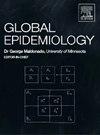Patterns and Associated Factors of Congenital Anomalies Among Neonates in 14 Yemeni Governorates 2021–2023: A Case: Control Study
引用次数: 0
Abstract
Background
Long-term disability and a reduced quality of life are often associated with congenital anomalies (CAs), which present as structural, functional, or metabolic defects. This study provides a comprehensive view of neonatal congenital anomalies in 14 Yemeni governorates, a significant but often overlooked public health concern. The current study aimed to determine the patterns and associated factors of congenital anomalies in 14 Yemeni governorates between 2021 and 2023.
Methods
An unmatched case-control 1:2 design was conducted using secondary data collected from various health facilities across 14 Yemeni governorates during 2021–2023. Sample size was calculated and data was analyzed using Epi Info version 7.2, with 612 neonates with documented diagnosis of congenital anomalies and 1224 healthy neonates. Binary and multiple logistic regression were used to identify factors associated with congenital anomalies, alongside the chi-square test.
Results
The majority of the congenital anomalies identified were located in Al Hudaydah (34 %), Ibb (17.2 %), and Sana'a (13.1 %). Most were isolated 518 (84.64 %), whereas 94 (15.36 %) were multiple. The predominant system was the nervous system (33.9 %), followed by the skeletal system (14.8 %) and orofacial anomalies (10.6 %). Furthermore, strong associations were found with positive consanguinity (OR = 28.82), low socioeconomic status (OR = 10.70), maternal age ≥ 35 years old (OR = 7.66), stress (OR = 4.95), acute diseases (OR = 3.56), gestational age < 37 weeks (OR = 3.32), maternal age < 20 years old (OR = 2.32), positive family history (OR = 1.74), low birth weight (OR = 1.27), grand-multiparity (OR = 0.71) and male sex (OR = 0.10).
Interpretation
This broad research identified significant patterns, maternal and neonatal associations, and protective variables for congenital anomalies. These results can help inform national interventions and policies for prevention and improving neonatal care.
Funding
This study was self-funded by the authors and did not receive any external funding or any specific grant from funding agencies in the public, commercial, or not-for-profit sectors.
也门14个省份2021-2023年新生儿先天性异常的模式和相关因素:一个病例:对照研究
长期残疾和生活质量下降通常与先天性异常(CAs)有关,先天性异常表现为结构、功能或代谢缺陷。这项研究提供了也门14个省新生儿先天性异常的全面观点,这是一个重要但往往被忽视的公共卫生问题。目前的研究旨在确定2021年至2023年期间也门14个省份先天性异常的模式和相关因素。方法采用无与伦比的病例对照1:2设计,使用2021-2023年期间从也门14个省的不同卫生机构收集的二手数据。使用Epi Info 7.2版本计算样本量并分析数据,其中612名新生儿被诊断为先天性异常,1224名健康新生儿。采用二元和多元logistic回归,结合卡方检验,确定与先天性异常相关的因素。结果发现的先天性异常主要集中在荷台达(34%)、伊卜(17.2%)和萨那(13.1%)。多数为分离病例518例(84.64%),多发性病例94例(15.36%)。以神经系统为主(33.9%),其次为骨骼系统(14.8%)和口面异常(10.6%)。此外,阳性亲缘关系(OR = 28.82)、低社会经济地位(OR = 10.70)、母亲年龄≥35岁(OR = 7.66)、压力(OR = 4.95)、急性疾病(OR = 3.56)、胎龄和早产有较强的相关性;37周(OR = 3.32),产妇年龄<;20岁(OR = 2.32),阳性家族史(OR = 1.74),低出生体重(OR = 1.27),多胎(OR = 0.71),男性(OR = 0.10)。这项广泛的研究确定了重要的模式,孕产妇和新生儿的关联,以及先天性异常的保护变量。这些结果有助于为国家预防和改善新生儿护理的干预措施和政策提供信息。本研究由作者自筹资金,没有接受任何外部资助,也没有从公共、商业或非营利部门的资助机构获得任何特定资助。
本文章由计算机程序翻译,如有差异,请以英文原文为准。
求助全文
约1分钟内获得全文
求助全文

 求助内容:
求助内容: 应助结果提醒方式:
应助结果提醒方式:


